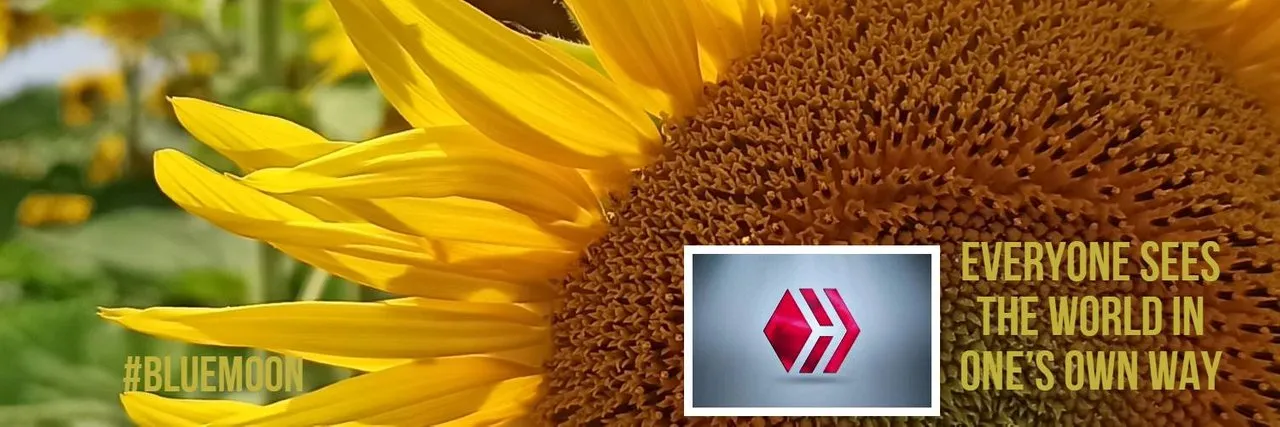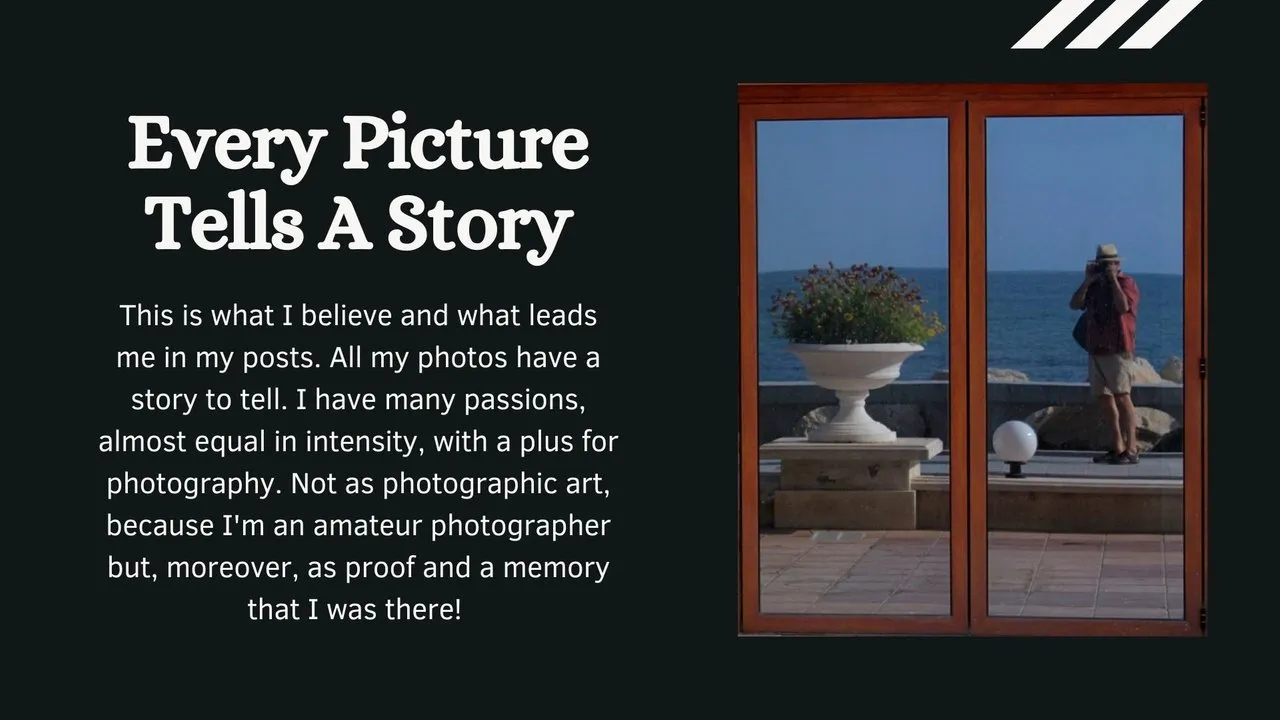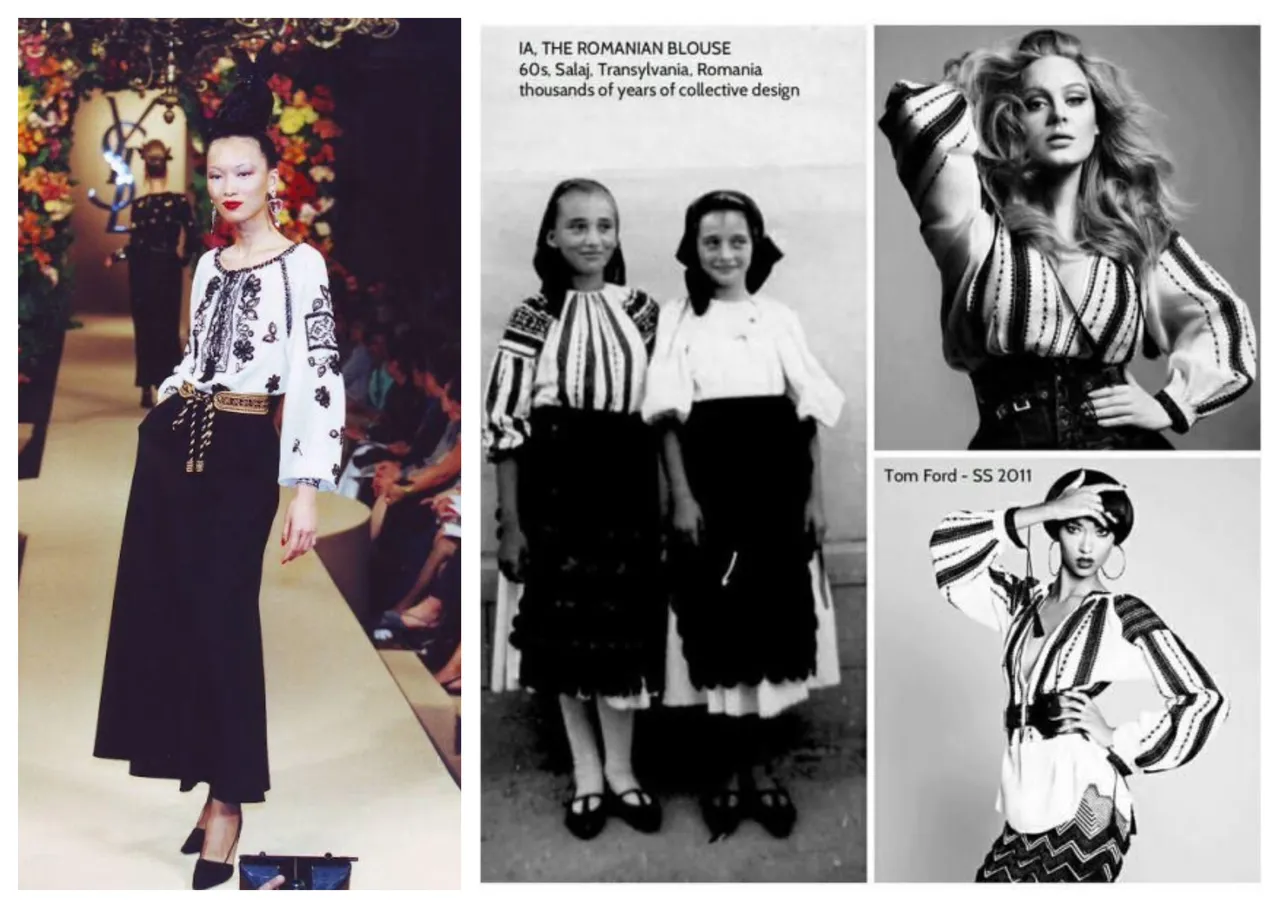We had a short trip to Transylvania, for three days, to Sibiu, perhaps the most famous and visited city in this region of Romania. The impressions from this trip are so strong that I can't stop writing, I can't find other subjects than what I saw there.
Not only the old town is a target for tourists. Even we made this trip to visit a famous museum, the Astra Museum. It is the largest ethnographic museum in Romania.
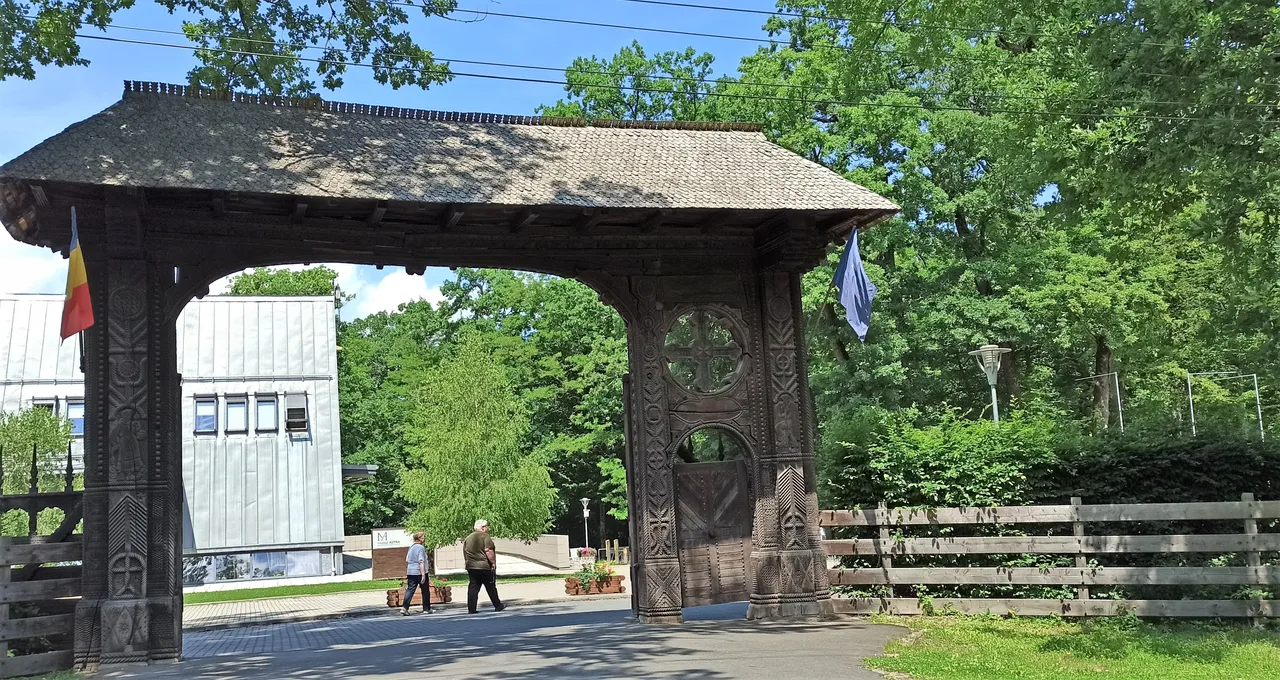
The museum is located in a forest on the outskirts of the city. I had read about this museum and seen photos and videos but I could not imagine its true size and beauty.

Today I will start the series of presentations in this museum with an exhibition of folk shirts, part of the Romanian folk costume. These shirts are called "ie". A rather strange name for a shirt.
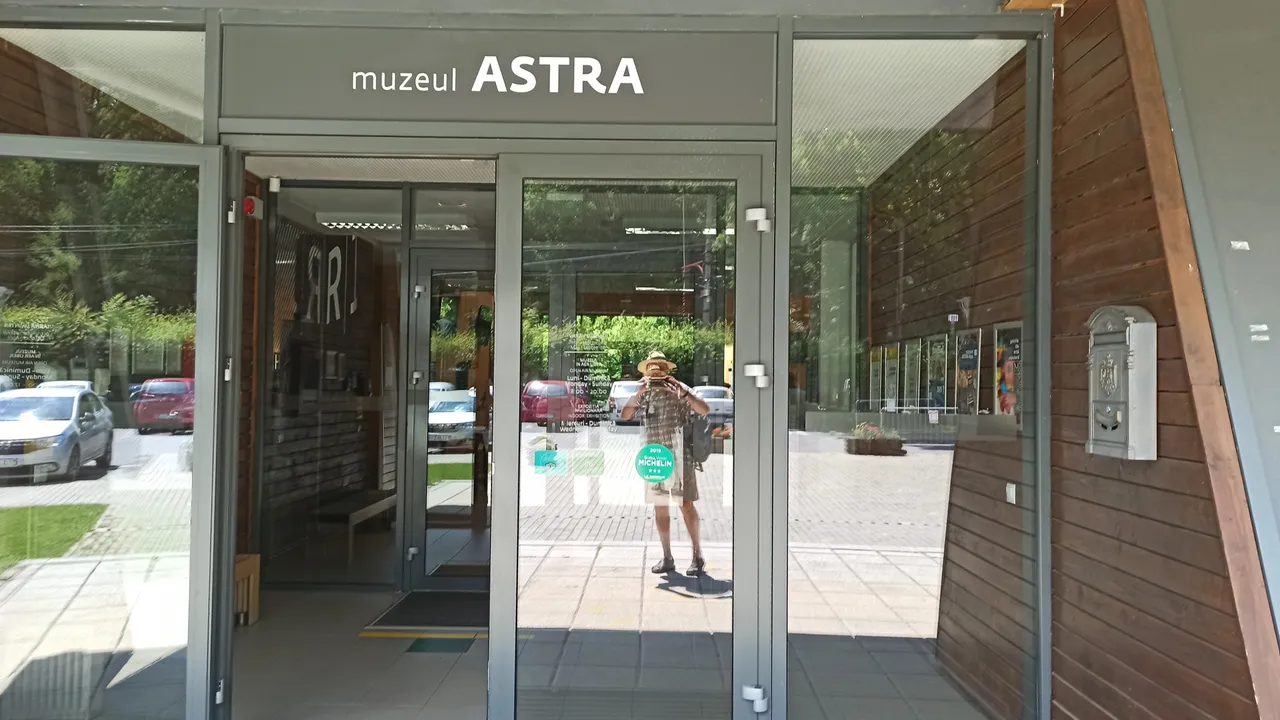
On the lower level, we found the exhibition hall.

First, let's see what an "ie" looks like. This is a shirt worn by women in rural areas.


This shirt was made in every house, from the processing of yarn (cotton and hemp), weaving, tailoring and decorating. The shape, but especially the decorations were different in each region of the country.

These embroidered and sewn shirts were worn on holidays, then on Sundays, when the family went to church and funerals. The work clothes, worn every day, were made of white cloth without these decorations.

Clothing is a perishable object that deteriorates after much use and, of course, these shirts would not have lasted for hundreds of years if not for a few favourable conditions.

One of the reasons why these costumes still exist is that these special shirts were part of young girls' dowries and then given by their mothers to their daughters. They were kept, because of their beauty, because they were hard to make and because they were keepsakes.
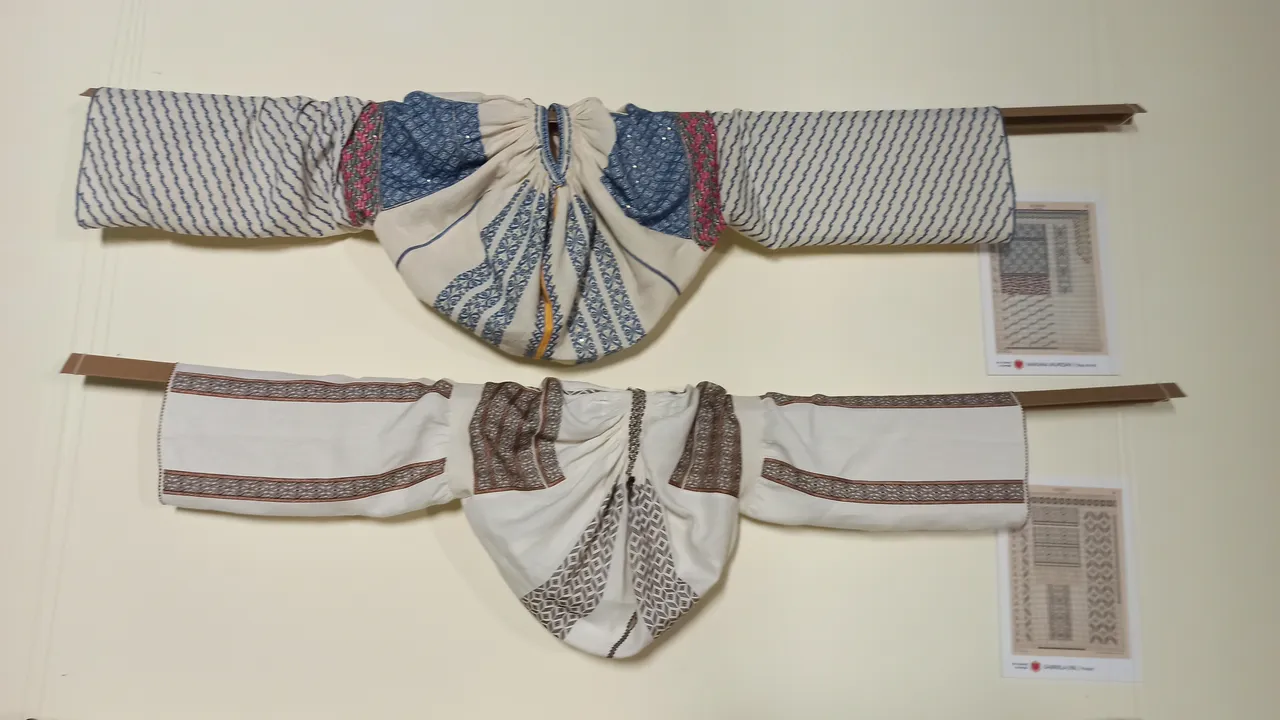
In the 19th century it did not occur to the peasants that their folk costume would become an object of interest, that it could be something other than an object necessary for their living.
Here another factor that contributed a lot to the preservation of these clothes, namely, the interest of some women in the high society of Romania that was beginning to modernize. One of these women is also responsible for this exhibition that I visited in Sibiu.

Elisa Bratianu was the granddaughter of the ruler and then the wife of Prime Minister Ioan I.C.Bratianu. Growing up in the country, Elisa fell in love with the folk costume, its beauty and diversity and started collecting. Then she did even more, she wrote a book in which she collected sewing patterns from all over the country.

All the shirts in this exhibition were made according to the drawings in Elisei Bratianu's book. The shirts are not old, they were sewn by women from all over the country. They are all handmade and each shirt took about three months of work.

This is the story of this exhibition. It was the surprise we had when we went to visit the famous Astra museum. I didn't know this exhibition was there. The Astra Museum is an open-air museum. We started our visit with the exhibition of Romanian ie, inside.

As you can see, the interest in these exhibits does not depend on age, but especially on gender.

Before continuing the visit of this exhibition, let me tell you about this shirt, "ie" named abroad "Romanian Blouse", which has become a symbol of Romania. For this reason it is celebrated, starting with 2018, June 24: The Universal Day of the Romanian Blouse!
However, you may wonder why it is celebrated internationally? What does the world care about a peasant shirt from Romania? The truth is that it doesn't, I think few of you have heard of this blouse.
The explanation is that abroad there are many Romanians who do not forget their country, their traditions and that's why they dress in folk costumes for the holidays. Especially girls and women and especially with "ie", because it is the most comfortable. You can see below...
Now some more pictures from the exhibition in Sibiu. A very well organized and arranged exhibition.


One more thing about this blouse that has come to inspire even painters in Paris. The famous Henri Matisse made a series of paintings inspired by the "ie", which he learned about from his friend, the Romanian painter Theodor Pallady, who gave him a collection of several blouses as a gift. This painting was made in 1940, measures 92 x 73 cm and is called "The Romanian Blouse".

But let's come back to present times and see some more of the exhibition with hundreds of Romanian blouses.


This Romanian blouse has also become of interest to the great fashion designers, who have used it in their collections. For example, Yves Saint Laurent and John Ford... On the left, Yves Saint Laurent's creation. In the middle, two Transylvanian girls in folk costume. On the right, two John Ford creations, top photo, quite a surprise, I'll tell you later...
Back on display, I hope I'm not boring you with so many changes. My wish is not to bore you.

Having come to the attention of major fashion designers and even before that, many world stars have worn this "ie", internationally called, for short, "IA" or, more descriptively, Roumanian Blouse.
Sharon Stone, Halle Berry, Emma Stone, Kate Moss, Nicole Kidman, Anne Hathaway.
We continue this movement back and forth in time and arrive again at the exhibition we visited.

The number of stars who have worn this shirt is impressive. Of course, because it was fashionable at one time but also for its beauty and comfort, AI is a loose and light shirt that lets the air circulate and is very pleasant to wear. I know this because I wore this shirt myself, in my slightly flower-power teenage years, as much as I could during the communist era.
Jane Birkin, Raquel Welch, Ali MacGraw.
Jackie Chan and Ziyi Zhang, ABBA, Shaggy and wife.
Back to the exhibition, I don't even know if there are any unused photos left...

I promised to come back to Tom Ford, the very well known fashion designer and director, but not only that, he was also creative director of Gucci, and many others..., a huge name in the fashion industry.
Well, he sold Adele, the famous British singer, in 2012, this Romanian AI inspired blouse for $49,000! He didn't even reveal the source of his inspiration.
Very interestingly, this blouse was inspired by the popular shirts from Marginimea Sibiului, i.e. near Sibiu. What the connection was to this post, without knowing until now, I did the documentation while writing the post.
The last shirts in the exhibition, I can say they are the shirts I liked the most!

They look so old, so original that it's hard to believe that they were sewn, it's true, by hand but nowadays. They're gorgeous, Tom Ford should be jealous..., but of course he doesn't care.
Instead, I read the opinion of a huge fashion artist, Yves Saint Laurent, while documenting and searching for information about IA (Romanian Blouse).
"The Romanian blouse will never go out of fashion.
Like all other traditional clothes,
it is passed down from generation to generation."
Which is perfectly true. I said that too, of course, far from my desire to compare myself to the immense French stylist, but from what I knew these costumes were passed down in the family, from parents and grandparents to children. That is, until recently. Now it doesn't happen anymore but, fortunately, there are still museums and enthusiasts who preserve and care for them and some even reproduce them, in the same conditions as their ancestors. Such as these in the exhibition I enjoyed seeing and showing to you.
Because this post is for #MarketFriday, brought here and curated by @dswigle, let's see what we can buy...
HERE is a site where these shirts can be purchased. Prices are, from what I've seen, between $150 and $500, maybe higher. You can guess the value of the shirts in this exhibit by making a comparison with what is sold online, with much lower quality and automated production, I think.
It was an exhibition that was not on our schedule, it consumed more than an hour of our time visiting the huge ethnographic park. It was worth it and I think it was a bonus!

We said goodbye, not before taking another look at what the design of the decorations for such shirts looked like. A project designed by Elisa Bratianu and passed on to future generations in her book.

That's why I named this post: A Link Between Past, Present And Perhaps Future!
Then we visited the big park, a real forest. We stayed there until night. Of course, you won't get away without seeing that too, if you want to. In a future post.
Until then let's admire some flowers at the entrance to this ethnographic museum. Because #alwaysaflower.


Thus ended another small part of the adventure in Sibiu. Below are all from so far, and more to come, as long as my photo folder and my head are full of other photos and memories.
Probably the most visited city in Romania - Sibiu
Sibiu - In Search Of Souvenirs
Wrapped Around The Stairs - Sibiu Again!
The Bridge You Shouldn't Cross, If You...
The Narrowest Street From Sibiu

